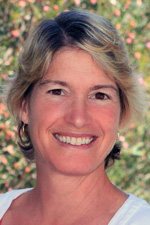By Eva Trieger

ENCINITAS, California -Upwards of 150 people were treated to a rare and wonderful talent Wednesday night, as the the Lipinsky Family Jewish Arts Festival featured Klezmer vocalist Elizabeth Schwartz, husband, Yale Strom and bassist Gunnar Biggs. The packed room at the recently remodeled Encinitas Library was a testament to the renown of this vivacious and sparkly chanteuse. And it didn’t hurt that the fiddler is equally famous, in his own right.
Not only does Schwartz have a mellifluous and mercurial voice, but she entertained in Yiddish, Hungarian, Russian and Romanian. Introducing each number with historical background, sometimes literary reference and always great enthusiasm and passion, Schwartz took us on a tour of the Old Country.
The trio opened with a medley, and they linked these two songs because they share a major key! Apparently this sets them apart from the typical gypsy lamentations that occupy the lion’s share of Klezmer tunes. The first was “Vallelejo” which we were taught it is the equivalent of oy vey!
As Schwartz bewitched us with a rich voice that sometimes mimicked the instruments, she kept time with her shoulders and played the sticks…two wooden slats that she rapped against her thigh to keep rhythm. It appeared from her infectious smile and easy rapport that she was enjoying herself as much as the toe tapping, hand clapping audience.
“Raizel”, a sad song, relates a lover’s woe as he visits the now empty garden of his intended’s father. He recalls the intimate moments they’d shared, as the violin counters with some of the lighter, more playful moments during their courtship.
In another piece, Schwartz introduced us to a doyna, an improvisational lament. This particular selection depicted Romanian woman, calling to each other from mountain top to mountain top. Her voice took on the resonance and vibrato of an instrument similar to the alpenhorn, as the lyrics reflected a young woman composing a letter to her lover who was leaving for the army.
The anecdotes Schwartz and Strom shared enhanced the musical sojourn and imbued each song with such personal connection and warmth. Deepening the experience was the versatility afforded the bass when played with a bow. Strom often provided yelps and whoops, underscoring the joyful nature of these Yiddish songs, in particular the song “Colorasher” which Strom said is typically played at weddings and named for the region of its origin. Upon hearing this beautiful, effervescent tune, the entire audience was transported to some hilly region where peasants were dancing in uninhibited celebration of the bride and groom.
Schwartz sang a tune in Hungarian, asking to be forgiven for her imperfect accent, though it sounded spot on to me! The tale Strom shared was that this song, originally written as a ballad to a woman, was altered when a passing Hassidic rabbi wanted to rewrite it to welcome and laud the Moshiach, the Messiah.
This gifted trio spoke directly to every person in the audience regardless of his mother tongue. Schwartz’s dramatic flair and raconteur’s style captured the heart and soul of every single listener. Even as I drove home, I was humming “Tumbalalaika,” and imagining my shoulders could keep time like Elizabeth Schwartz’.
*
Trieger is a freelance writer who specializes in the arts. She may be contacted at eva.trieger@sdjewishworld.com